市场资讯及洞察

Major companies have announced over 25,000 layoffs in the U.S. this month alone, with Amazon leading the charge with 14,000 announced corporate job cuts.
This number may increase to 30,000 for Amazon by the end of the year, as CEO Andy Jassy pursues a vision of operating like "the world's biggest startup.”
Other big corporations have followed the same trend, with Target making 1,800 corporate cuts, Starbucks 2,000 positions, and, in Europe, Nestlé plans for over 20,000 cuts.
What distinguishes this round of layoffs is the focus on white-collar roles seen as vulnerable to AI-driven automation—affecting middle managers, analysts, and corporate staff.
Gartner analysts predict that by 2026, one in five organizations will use AI to eliminate at least half of their management layers.
According to a KPMG survey, 78% of executives face intense pressure from boards and investors to prove AI is saving money and boosting profits, with traditional metrics often failing to capture its business impact.

Ford CEO Jim Farley warned that AI will "replace literally half of all white-collar workers," while Salesforce's Marc Benioff claims AI is already doing up to 50% of his company's workload.
Anthropic CEO Dario Amodei predicts AI could eliminate half of all entry-level white-collar jobs within five years, potentially spiking unemployment to 10-20%.
Nvidia Makes History Again As First $5 Trillion Company
NVDA hit a $5 trillion market on October 29, becoming the first company in history to reach this milestone. The achievement came just three months after breaching $4 trillion, further cementing its position as the dominant force in artificial intelligence infrastructure.
Since Q4 2022 — when Chat-GPT launched and began the AI-boom — Nvidia shares have climbed by over 1200% and Nvidia's valuation now exceeds the entire cryptocurrency market and equals roughly half the size of Europe's benchmark Stoxx 600 index.
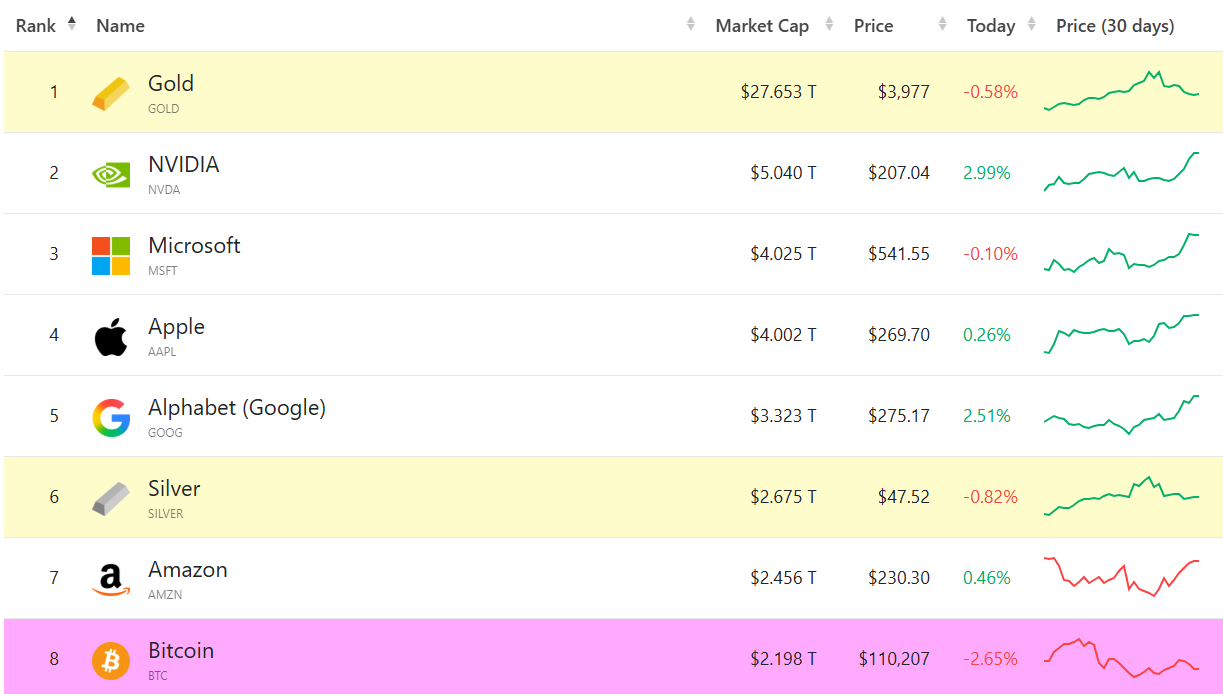
The milestone comes on the back of CEO Jensen Huang unveiling $500 billion in AI chip orders and plans to build seven supercomputers for the US government.
However, there are warnings that AI's current expansion relies on a few dominant players financing each other's capacity, and valuations may be running hot. The real test comes on November 19 when Nvidia reports its quarterly results.
Fed Lowers Rates, but May Be Last Cut of 2025
The Federal Reserve delivered a quarter-point rate cut last night, but Jerome Powell's post-meeting press conference sent a clear message: don't expect another cut anytime soon.
While the Fed moved forward with the expected reduction, Powell pointed to two key obstacles that may prevent further easing this year. First, the ongoing federal government shutdown has created a data blackout, depriving policymakers of critical employment and inflation reports.
Second, Powell revealed "strongly differing views" among Fed officials about the path forward, with a "growing chorus" advocating for a pause before cutting rates again.
Markets responded by adjusting expectations, now pricing in roughly two-to-one odds for a December rate cut — down from what had been considered more certain just hours earlier.
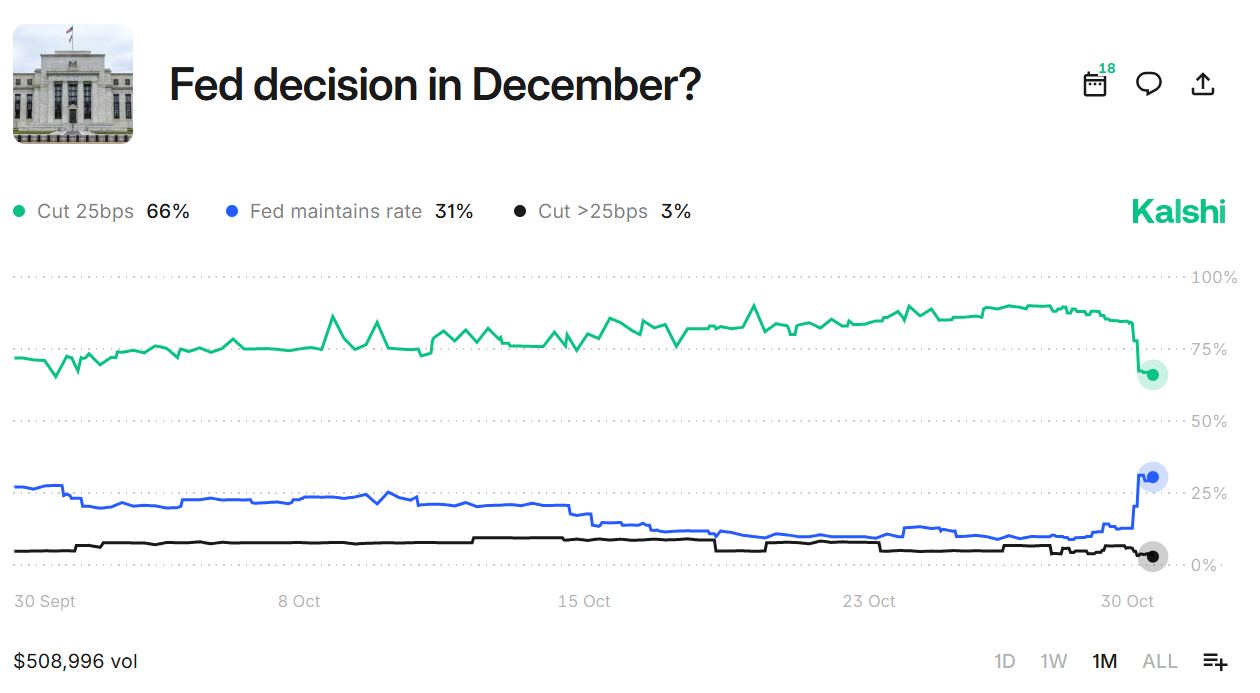
While the Fed still seems to remain committed to eventual rate cuts, the timeline has become dependent on the government shutdown and clearer economic signals about inflation and employment trends.


Entries for longer-term stock investment approaches can be based on either long-term technical trends or more commonly, fundamental data related to a company’s current and projected performance. Despite the plethora of such suggestions, there is often a lack of clear guidance, or even a complete absence, of instructions on determining the timing of an exit from a long-term position. Logically, whether it’s a short-term technical entry or long-term fundamental entry, many of the “rules of the game” are similar, including the need for clear and unambiguous exit strategies seems paramount for consistently positive investment outcomes.
The approach originally used to make an entry decision can serve as a good starting point but there are other considerations that can potentially benefit outcomes. This article aims to briefly describe six potential exit approaches you could consider, providing some detail and examples as to how to action your chosen approach. Target Price Exit Strategy Setting Targets: Determine a fair value (and thus exit price target) by conducting in-depth fundamental analysis, utilizing metrics like Price-to-Earnings ratio (P/E), Cash flow, debt levels, book value, or longer-term technical levels.
On-going monitoring: Regularly track the price against this target. For example, if you calculate a fair value for a stock at $50, and it’s currently trading at $45, you might decide to sell once it reaches or exceeds $50. Other Considerations: Regularly review and adjust the target price, taking into account changes in fundamental factors impacting the relevant sector or market as a whole.
Ongoing Fundamental Awareness Ongoing Analysis: Continuously evaluate underlying fundamentals, such as earnings, balance sheets, cash flow, and management quality. Be vigilant not only when next company reporting dates are due but also for the often-unpredictable release of operational updates or changes in guidance. Trigger Points: Identify specific company indicators or information that would prompt an exit.
An example of this may be a sustained decline in revenue or mounting debt levels, particularly when beyond what was originally expected. Other Considerations: Implementing this strategy requires consistent research and a nuanced understanding of the particular business and industry factors influencing the investment. Having the optimum resources in place to be able to do this is vital and identifying these should be a primary goal of any fundamental investor.
Economic & Sector Changes On-going Analysis: Regularly review broader economic indicators like GDP growth, inflation, interest rates, or industry trends. Understand how such changes in these key data points may correlate with the asset price and establish exit criteria accordingly.For example, you may reconsider a position in a technology stock if there’s a widespread shift away from tech spending or growth concerns or regulatory changes that detrimentally affect the sector. Other Considerations: This strategy necessitates a broad understanding of economic cycles, industry dynamics, and how these elements interact with your particular investment holdings.
Additionally, it’s worth noting that appropriate resources should be in place to ascertain this as proactively as possible, or at worst in a timely manner. This may assist in preventing excess depreciation in asset price to the point where action is delayed and major capital damage has occurred. Dividend Targeted Approaches On-going Analysis: If part of your entry criteria and anticipated return from fundamental analysis-oriented trades is based on dividend yield to some degree, it is worthwhile to not only look at what is current but also perform ongoing evaluation of the reliability and/or growth of dividends.
Exit Criteria: Having established an expected return, it logically makes sense to have criteria in place to help decision making. For example a decrease in dividend yield below a certain threshold or a cut in dividends could be part of your potential exit plan for a specific investment. Other Considerations: As well as vigilance for the timing of company announcements where dividend changes are often announced, awareness of the yield of your current investment compared to others, and industry trends is required, as they could influence the sector and the market as a whole.
Time-Based Exits On-going Analysis: Often with time-based exits, there is alignment with a particular impending event. Examples of this type of event include a shift to EVs from petrol-fuelled cars or the impact on assets in the lead-up to an election. Either way, your investment time horizon needs to be reviewed should there be a change in circumstances and the rationale behind your initial thinking on entry.
Other Considerations: There is a discipline involved in exiting from a stock position that remains strong even after an event, or the impact of such, has passed. With a systematic approach to fundamental entries in place, it is legitimate to review whether other fundamental approach criteria are met and perhaps consider continuing to hold. Without this in place, or if no match with other approaches exists, logic would dictate that a planned exit is an exit, and you should action it as such, no matter how well this specific position has served you to date.
Portfolio Rebalancing On-going Analysis: Although not based on a specific entry approach, periodically evaluate your overall portfolio asset allocation is prudent. Reviewing whether the current holdings are still a fit with long-term investment aims and risk tolerance in current and ongoing market circumstances are appropriate rebalancing considerations. Rebalancing Exit Approach: Criteria for rebalancing should be pre-planned and clearly defined.
These may require consideration of multiple factors, such as an asset becoming an excessive portion of the portfolio on good performance, or changes in market or economic circumstances that threaten specific portions of the portfolio. Other Considerations: Continuous monitoring of the portfolio is required, and checking continuing congruence with desired asset allocation and your risk profile is vital. Rather than based on a specific entry approach, just to reinforce that the concept of rebalancing is one that is important across all of the approaches described above.
Summary Although they receive little “airplay” in comparison to technical approaches and exits, the exit strategies within a portfolio based on fundamental analysis entries are multifaceted, frequently interconnected, and equally important to master. Crafting a proficient exit system demands a comprehensive knowledge of each specific investment holding, and wider market and economic dynamics, in the context of your personal investment objectives, and risk tolerance. The need for a set of written system criteria for all actions, regular monitoring, thorough analysis, and disciplined adherence to predetermined exit criteria are essential.
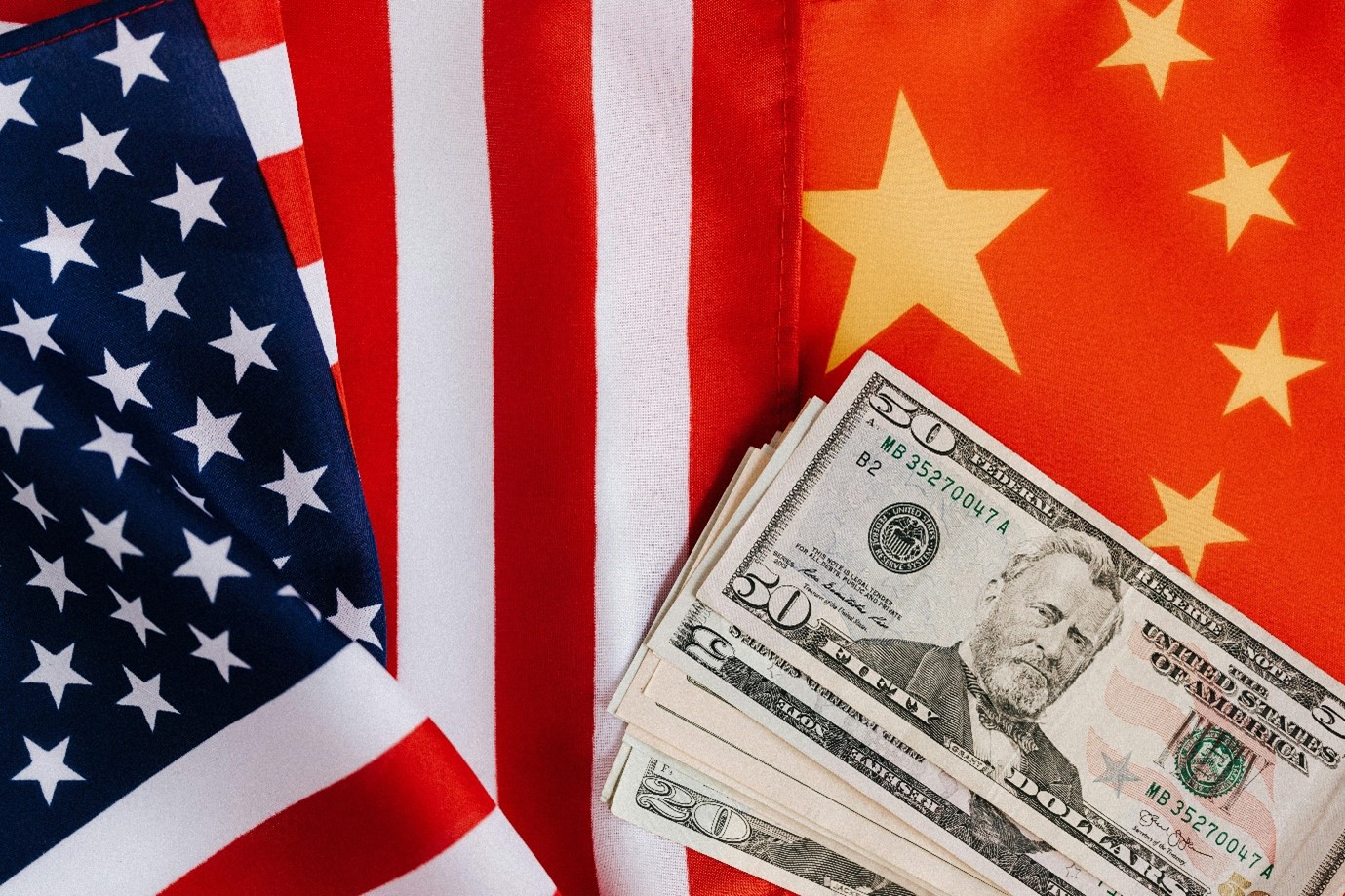

热门话题
2024年三季度开始,全球货币政策正常化并逐渐分化。美欧央行延续降息周期,日本央行升息与缩减购债双管齐下,美元指数连续四周震荡回落,全球外汇市场进入了转折期,波动加剧。中国方面,美国开启降息周期后减轻了中国的外部制约,最近的降息降准降存量房贷利率、8000 亿元货币政策工具等政策给A股和港股打了鸡血,一时之间,股市疯了,汇市也跟着大起大落。美元兑离岸人民币一度跌破7,人民币在近两个月相对美元升值超过4%,借着东风,我们来分析下本轮升值的逻辑。

自强制结售汇制度退出后,人民币汇率主要受由私人部门持有人民币资产的意愿影响,反映在投资上就是受中国境内外债权和股权资产的回报率差异,即利差和资本回报率差异驱动。2022年初至2024年上半年,中国的货物贸易盈余占GDP的3%-4%,接近近十年的平均水平。同时,中国国际收支中经常项目顺差累计达到7730亿美元,表明中国赚取外部收入的能力还是很强。尽管中国赚取了大量的海外资金,但大量的海外收入沉淀在境外,即使回到境内,也多以外汇形式持有,没有转换为人民币资产。从2022年初至2024年7月,中国银行代客涉外收付款累计净流出650亿美元,结售汇净额为-1120亿美元,人民币兑美元贬值9%;2015年至2018年期间,银行代客涉外收付款累计净流出7000亿美元,结售汇净额为-9180亿美元,而同期人民币相对美元贬值了10%。这两次贬值都伴随着人民币资产回报率的下降。2014年至2015年,中国境内的高利率吸引了大量套利资金,但利率快速下降后,跨境套利资金流出,加上传统行业产能过剩,资本回报率下滑,2015年A股泡沫破裂更是雪上加霜。2022年至2024年也是类似的逻辑,国际高利率环境下,中国境内利率持续下降,利差“倒挂”加深,人民币资产的回报率下降,私人部门持有人民币资产的意愿明显降低;海外投资者也是一样——根据人民银行的数据显示,2022年至2024年,海外投资者多减持人民币的股票和贷款,外商直接投资明显下降。2023年后,海外投资者增持人民币债券,持有量创下新高。

此外,随着中国持续降息,自2022年起,人民币逐渐成为了一种融资货币,人民币汇率与日元汇率的相关性显著上升,这就意味着日元兑美元升值可能带动人民币升值。随着日元债券利率在2024年回升,8月美元兑日元套息交易集中平仓,日元对美元大幅升值,这也带动了人民币的本轮升值。同时,随着美联储在9月开始降息,美元与人民币的利差缩小,也激发了未结汇客盘资金回流。过去两年,约5000亿至1万亿美元的未结汇资金沉淀在境外,现在其中10%正在回归并结汇,短期内对外汇市场造成的这种巨大影响很可能持续到国庆之后。综上来说,本轮人民币升值的主要因素来自外部,因此我们说人民币兑美元的升值是被动的。技术面上看,USDCNH在今年7月中旬形成明显下降趋势,特别是在9月,市场加速下跌,近期汇率在7左右心理关口得到了支撑并出现了一波反弹,下一个阻力位大约在7.04附近,如果突破阻力位则可能挑战7.08附近,如果反弹上行力度受阻则可能继续下跌,年内可能突破7。
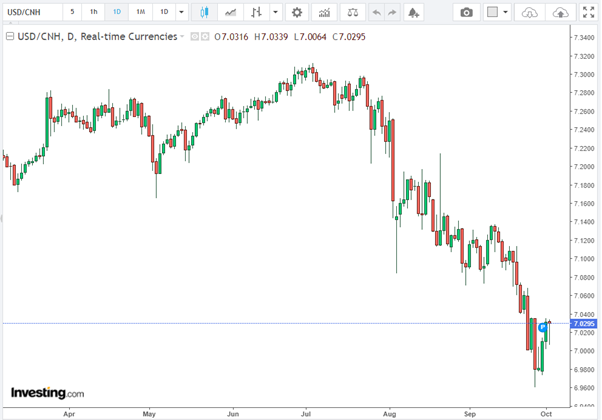
除了上述外部因素,人民币国际化的新秩序带来的资金流动也会发挥作用。2023年,中国跨境人民币结算量同比增长24%,人民币在全球支付结算中的使用份额超过4%,今年9月份再创新高,人民币汇率的长期驱动力提升。随着中国企业“走出去”和外商直接投资增速放缓,国际收支口径中的直接投资已连续两年为净流出。以后在贸易和投资项下流出的人民币将增多,回流的人民币用途将更加多样化,例如“一带一路”、“南南合作”相关投资可能有长期的产业合作安排。人民币国际化的新秩序下国家队力求汇率相对稳定,因此在市场出现较大冲击时人民币反而可能表现出较强的稳定性。免责声明:GO Markets 分析师或外部发言人提供的信息基于其独立分析或个人经验。所表达的观点或交易风格仅代表其个人;并不代表 GO Markets 的观点或立场。联系方式:墨尔本 03 8658 0603悉尼 02 9188 0418中国地区(中文) 400 120 8537中国地区(英文) +248 4 671 903作者:
Christine LI | GO Markets 墨尔本中文部


热门话题
昨晚,石油价格跳涨超过4%。美国WTI原油突破71美元/桶,布伦特原油突破74美元/桶。黄金突破2670美元/盎司,日内涨1%。原因是伊朗导弹袭击以色列 ,这次袭击是伊朗历史上对以色列最大规模的导弹袭击,共发射了200枚导弹。预计未来战事升级的概率很大。为什么伊朗忽然发射大规模导弹呢?因为9月29日,黎巴嫩真主党发布声明,其领导人哈桑·纳斯鲁拉(Hassan Nasrallah)在以色列对黎巴嫩的空袭中被杀害,并且以色列还在继续袭击更多的真主党目标,至目前已有十多名指挥官被暗杀。伊朗领袖Ayatollah Ali Khamanei宣布伊朗全国为Nasrallah哀悼5天,同时呼吁联合国安理会举行紧急会议。在此之前,伊朗革命卫队的行动副司令也被袭击死亡。Nasrallah是黎巴嫩的政治领袖之一,主要成就在国内医疗、教育和社会服务方面,同时引导真主党从一个民兵组织成长为比黎巴嫩军队更强大的军事力量。他在各类公开声明中,也表示了建立和平秩序的愿景。近期的冲突起源于书前台传呼机爆炸的袭击,以及以色列对黎巴嫩部分地区进行报复性空袭,造成接近800人死亡。

从古至今,战争除了领土和资源的争夺,最难缓和的就是信仰冲突。目前,超过20万人在黎巴嫩境内受到战争影响无家可归,到处废墟。美国这类所谓的世界“警察”,即军事强国,并没有安抚各国,制止战争,而是站在以色列的立场,全力支持以色列占据优势后,再呼吁双方停火。总之,面子和里子不能让以色列吃亏。好在目前的阶段,美国等12个国家盟友,给出了为期21天的停火协议,但是美国军方和以色列军方未必遵守,美国国防部宣布,如果伊朗继续袭击以色列,将面临严重后果。美国也会参与帮助以色列巩固导弹防御。没有军事力量,很难在国际社会中讲究完全的公平。这一点中国百年前就很明确。看到中东目前的困境,再看中国近几十年的发展,无论是从军事上还是经济上,确实可圈可点。所以,无论政治决策如何,至少国力强盛,有益于我们海外华人的发展和生活。

对澳大利亚来讲,冲突升级也不是一件好事情。首先澳洲有很多来自黎巴嫩等国的移民或短期避难的群体,其次,澳洲虽然资源丰富,但是油价等产品还是受到中东局势的影响。目前澳洲总理谴责伊朗对以色列的导弹袭击,并且安排飞机接澳洲人从黎巴嫩撤离。美国股市受到影响普遍下跌,尤其是航空公司股价,大家也有避险情绪。国防类股价上涨,其中包括诺斯罗普·格鲁曼公司NOC.N,上涨 3%,洛克希德马丁 LMT.N 上涨 3.6%。标准普尔 500 航空航天和国防指数攀升至历史新高。
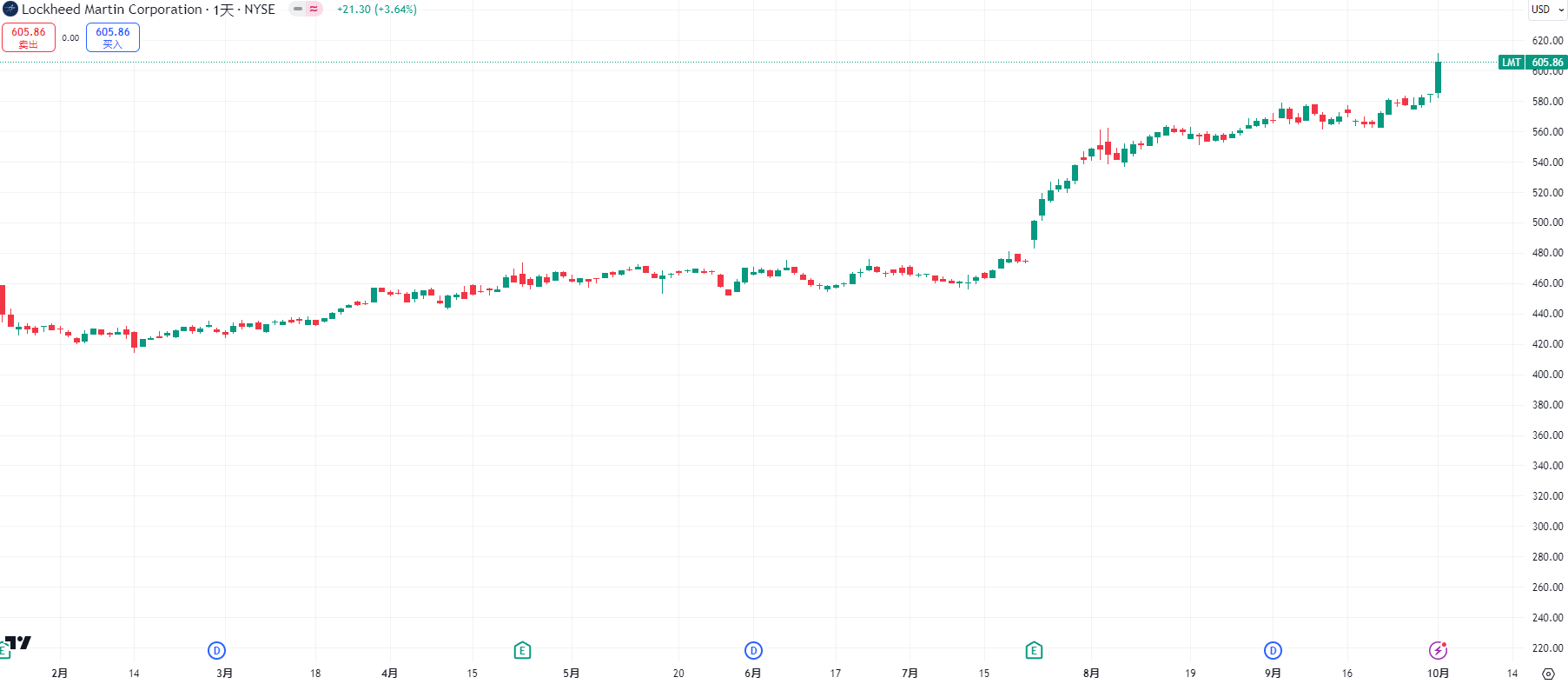
战事升级的长期影响,石油价格和黄金价格可能继续走高,原油价格短期内波动可能飙升20-30%。由于投资者转向避险资产,道琼斯指数和纳斯达克指数可能继续下跌。为了对冲全球不确定性,黄金价格可能大幅上涨。总之,未来的金融产品价格波动率会加大,大家做好预防准备。免责声明:GO Markets 分析师或外部发言人提供的信息基于其独立分析或个人经验。所表达的观点或交易风格仅代表其个人;并不代表 GO Markets 的观点或立场。联系方式:墨尔本 03 8658 0603悉尼 02 9188 0418中国地区(中文) 400 120 8537中国地区(英文) +248 4 671 903作者:
Jacky Wang | GO Markets 亚洲投研部主管


热门话题
过去5个交易日,A股市场总市值累计增加超17.23万亿元。个人投资者在这5天内的平均盈利达约2.58万元。轻轻松松的送给大家十一假期的消费大礼包。因此,十一之前的这波上涨非常重要,通过十一国庆节期间的消费情况,直接验证股市上涨对消费的提振。毕竟,实践是检验真理的唯一标准。如果这次十一消费情况远远好于去年,就意味着拉升股市的方向是对的,是可以拉动实体经济和消费水平。9月30日,A股市场继续疯狂,创业板指暴涨15.36%,单日涨幅创历史纪录,科创50指数暴涨17.88%,单日涨幅创历史纪录,北证50指数暴涨22.84%,单日涨幅创历史纪录,深证成指暴涨10.67%,也创出记录。沪深两市成交金额突破2.59万亿元,创历史新高。

从上周24号上涨的第一天,我就明确了,买就完了,这是情窦初开的男孩,遇见了一见钟情的女孩,并且女孩也是心仪男孩,一入爱河,感觉对了,不需要问什么,猛烈的上涨一如猛烈的爱情。如今,市场验证了我的判断。部分券商开户数量激增,股市相关的访问量超过千万,散户开始大量入场。毕竟没有人能够抵御股市快速上涨带来的财富增值的诱惑。预计国庆节期间,大家有时间看看新闻,感受到了股市牛市的气息,国庆之后,还会有更多的散户进入市场。目前,中国的资产,部分被低估,部分被高估。海外投资者还是需要做出筛选。在刚刚上涨的初期,什么资产都可能上涨,但是在1-2年的投资周期中,能够一直稳定上涨,比如美国的苹果公司,亚马逊公司,微软公司等,就需要公司本身有核心竞争力,能够创造社会价值,才能长期稳定增值。国庆节之后,我认为大概率还是会继续上涨,可能震荡消化一部分获利盘,但是高成交量背后,也意味着获利盘可能已经完全被消化了,所以后续继续上涨的概率不小。如果没有办法直接参与A股交易的投资者,可以买一些龙头的中概股,比如港股的腾讯,比亚迪等。以腾讯为例,股价从今年的260港币附近,上涨到目前444港币附近,接近翻倍。但是跟Facebook等美国科技股相比,还有很大的差距。Meta公司,就是Facebook,在疫情后也和腾讯一样下跌,但是下跌20%之后,股价上涨了280%,接近涨幅3倍,而从最低点反弹的腾讯,只上涨了73%。因此,中美双方的企业估值在22年之后出现了较大偏差。如果未来估值回归,腾讯这类企业股价还有接近100%的上涨空间。当然,中概股和恒生面临的问题,也会在美国大选尘埃落定之后,看美国新政府对待中国企业的态度,如果贸易战和人民币危机再次发生,那么就意味着中概股可能再次受到冲击,因此,买入中概股可以作为一个资产配置,但不是核心的资产配置。

再看澳元和人民币,受到中国经济和政策的提振,澳元有所复苏,加上美元降息,非美货币上涨,因此澳元人民币未来大概率会突破5。所以有提前换/Hui需求的朋友,可以提前做好准备,在GO Markets交易澳元人民币,也是一个非常不错的投资选择。免责声明:GO Markets 分析师或外部发言人提供的信息基于其独立分析或个人经验。所表达的观点或交易风格仅代表其个人;并不代表 GO Markets 的观点或立场。联系方式:墨尔本 03 8658 0603悉尼 02 9188 0418中国地区(中文) 400 120 8537中国地区(英文) +248 4 671 903作者:
Jacky Wang | GO Markets 亚洲投研部主管


热门话题
随着九月临近尾声,原本美股百年魔咒被打破,三大股指目前均保持月度上涨,标普和道指均创下新高,纳指也在向着前高靠拢。与之前的本质区别是美联储以前首降进入货币政策转向过度阶段是经济下行压力面临衰退导致,本次首降50个基点力度大并且目前美国经济强势,GDP达到惊人的3%年率,降息主要是就业数据不佳导致的,另外今年预期降息至少100个基点,降息缩表双向进行,既能缓解就业风险,又能继续控制通胀反弹。且不论数据真实性,大选临近,民主党可谓用尽了招数为自己拉票,在这样的大环境下,股市自然不会崩盘。还有一大因素就是亚洲市场的爆发,刺激了全球原材料市场的全面上行。本来美联储降息就对大宗商品和能源价格有一定的促进作用,现在中国政策全面推进股市蓬勃发展,新能源相关材料板块,稀土,铁矿石,铜和铝等板块都被推波助澜,短期疯狂上涨成为不可多得的波段好时机。

在即将进入十月之际,全球股市的大环境都是非常不错的。中国的股市短期还会持续爆发,美国非农周预期就业数据并没有多少改善,依然会强化美联储降息迫切性,目前11月利率决议降息50个基点的概率过半。因此澳洲尽管还在高息环境下短期不会降息,但是作为矿业出口型大国,原材料板块的暴涨势必带动几大材料板块大幅反弹,因此本周有色金属等板块依然可以持有。若非农配合加剧降息预期,十月原材料板块将继续大涨,之前超跌板块将有望大幅反弹。这里特别需要注意的是AI板块,每次进入财报季,AI都会有较明显的回撤,尽管美股整体表现很好,但近期AI整体并没有去年那样的疯狂,7巨头权重太高严重影响纳指走向,近几个月价格拉锯战令AI大部分企业并未一飞冲天。若板块轮动如期到来,也是真正牛市的开启,罗素2000能够冲向前高,那么在普涨行情下,AI或许不会得到资金的重点照顾。这里选择AI标的就变得至关重要,比如10月即将落地Robotaxi的特斯拉,过去几年整体上股价并未创造新高,后续发力空间很大,也值得逢跌建仓作为长线投资的标的。还有美光科技本次财报显示三季度即将扭亏为盈的预期,市值目前也较低,前期回调幅度极大,也是可以进场的标的。

这里不得不提到去年一直在分析的未来长牛板块,周期极长的核能板块,是未来电力缺口首要选择,美国已经开始大力发展核电作为AI供电的强有力补助,亚马逊和微软都已经涉足核电为其未来AI算力作为供应,核技术股和铀矿股都是十分不错的选择。特别是前几个月铀矿股回撤较大,目前澳洲铀矿股大都价格还没有匹配国际铀价水平,还有非常不错的进场机会。免责声明:GO Markets 分析师或外部发言人提供的信息基于其独立分析或个人经验。所表达的观点或交易风格仅代表其个人;并不代表 GO Markets 的观点或立场。联系方式:墨尔本 03 8658 0603悉尼 02 9188 0418中国地区(中文) 400 120 8537中国地区(英文) +248 4 671 903作者:
Xavier Zhang | GO Markets 高级分析师


热门话题
随着人工智能(AI)技术的快速发展,全球范围内AI专利的数量呈现爆发式增长,尤其是在AI芯片和大模型领域。OpenAI、英伟达(NVIDIA)等科技巨头通过专利积累,巩固了市场地位,但这也引发了关于市场垄断的担忧。近期,OpenAI进行了高层管理的调整,并在最新更新中披露了其对欧盟AI法案的核心承诺,这些变动为AI领域的未来走向增添了更多的不确定性。一、AI专利激增:推动创新还是形成垄断?近年来,AI领域的专利申请量急剧上升,特别是在大模型训练和AI芯片开发方面,OpenAI和英伟达通过技术优势形成了显著的市场主导地位。据华尔街分析师估计,AI芯片市场在未来五年内可能突破千亿美元。这种专利的积累不仅帮助公司在市场中站稳脚跟,也使新兴企业很难进入这一领域。OpenAI与微软的合作进一步巩固了其在大模型领域的领先优势。尽管专利可以推动技术进步,但集中在少数企业手中的专利池也可能抑制市场竞争。华尔街的分析指出,如果专利壁垒过于坚固,创新速度可能会减缓,尤其是中小型企业在面对巨头的垄断时,创新机会可能被限制。
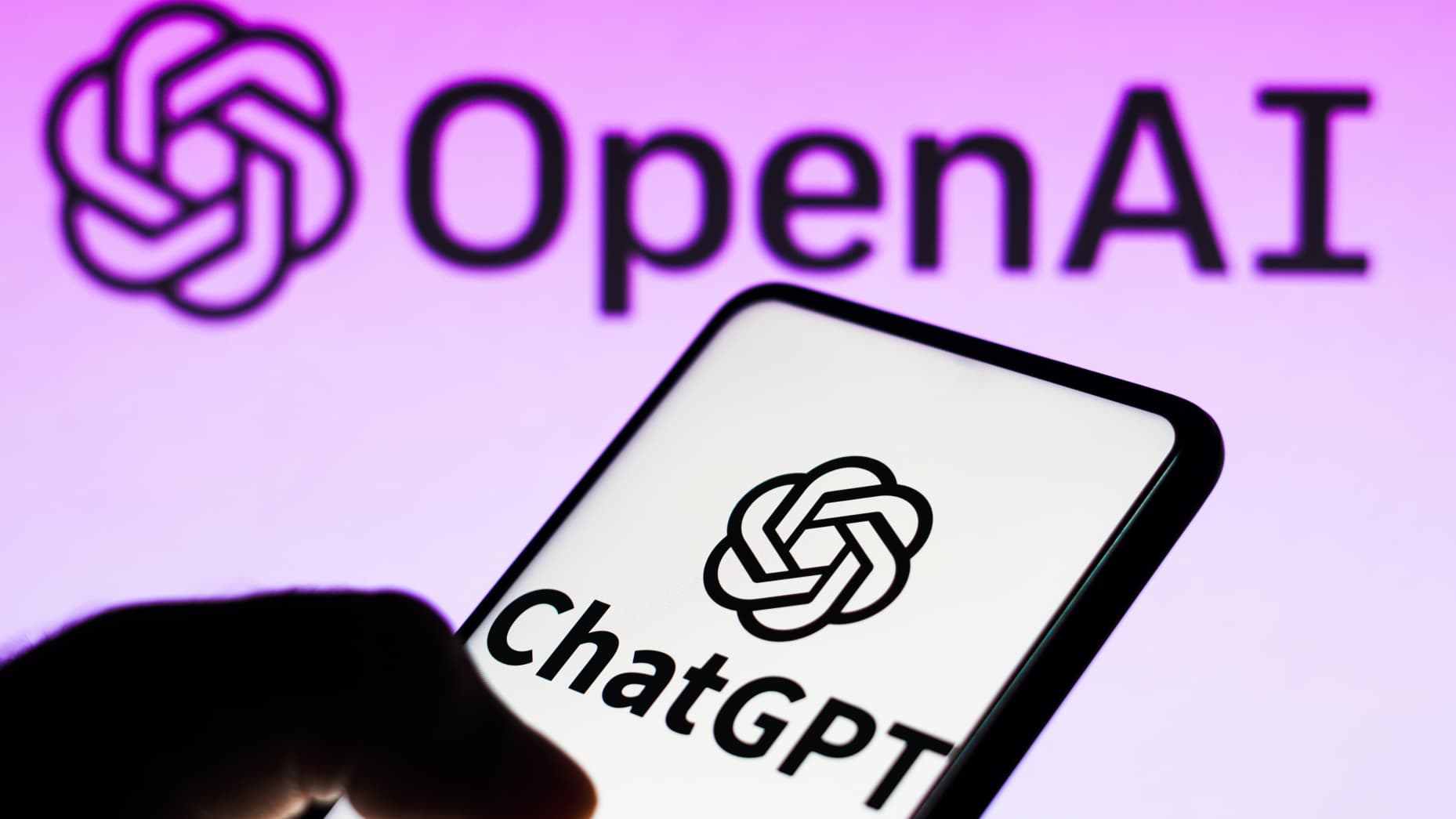
二、OpenAI的高层换血与公司转型近期,OpenAI经历了重要的管理层变动,首席技术官(CTO)离职,CEO山姆·奥特曼(Sam Altman)获得了7%的公司股份。这一变化标志着OpenAI正加速向盈利机构转型。奥特曼在掌控更多股权后,公司的战略重点也变得更加明确——不仅要继续在AI领域保持技术领先,还要将技术更有效地转化为商业价值。这次高层调整反映了公司内部战略的转型。OpenAI从一家非盈利性质的研究机构逐渐转向更商业化的模式,并且将大模型技术推向更多的行业应用。根据业内分析,OpenAI未来可能会在医疗、金融等垂直领域探索新的商业机会,而这些领域的技术应用也会带来更多的专利布局。三、OpenAI的AI法案核心承诺:规避风险还是顺势而为?在OpenAI最近的一次更新中,公司透露已签署了《欧盟人工智能法案》(EU AI Act)中的三项核心承诺。这些承诺包括推动AI治理战略、确保AI系统的合规性,并加强员工的AI素养。这标志着OpenAI正在积极应对全球监管环境的变化,特别是在欧盟等地对AI系统提出的严格要求下,OpenAI展示了其对合规和透明度的重视。欧盟AI法案旨在通过立法手段规范AI技术的开发和应用,防止大型科技公司滥用市场优势。OpenAI的举措不仅是响应法案的合规要求,也表明公司愿意在未来与欧盟保持密切合作,以降低潜在的法律风险。尽管如此,行业观察者认为,这类监管措施能否真正遏制科技巨头的垄断还需要时间观察。

四、市场展望与金融机构的看法在金融市场中,OpenAI的转型与其对监管的应对措施引起了广泛关注。华尔街分析师指出,尽管欧盟的监管压力增加,但OpenAI等公司凭借其技术和市场积累,仍然能够在未来几年继续主导AI领域。低利率环境为这些科技巨头提供了更多融资机会,推动了研发和技术扩展,特别是在大模型和AI芯片方面的投资。与此同时,投资者也在密切关注全球各大经济体的监管趋势,特别是在AI专利集中与市场竞争公平性之间的平衡问题上。OpenAI的高层变动和欧盟AI法案的核心承诺让市场看到了这些公司在技术创新之外,还在积极寻求与监管框架的融合。这也意味着,未来AI市场的竞争将不仅仅依赖于技术优势,合规和治理能力也将成为决定企业成败的重要因素。

结论:科技巨头的未来是创新与监管的博弈AI领域的专利积累既推动了技术进步,也带来了潜在的垄断风险。OpenAI通过高层换血和加速商业化转型,展现了其在未来市场中的竞争力。而欧盟AI法案的监管措施则对这些科技巨头提出了更高的合规要求。未来,市场将继续观察这些公司如何在创新与合规之间找到平衡点,以适应日益严格的全球监管环境。尽管面临挑战,OpenAI和英伟达等公司仍然有望凭借其技术积累在AI领域保持领先,在长期发展来看,依旧是潜力很大的一个板块。投资者应密切关注监管政策的变化,以及这些企业在应对挑战时的灵活策略,以更好地把握未来市场机会。免责声明:GO Markets 分析师或外部发言人提供的信息基于其独立分析或个人经验。所表达的观点或交易风格仅代表其个人;并不代表 GO Markets 的观点或立场。联系方式:墨尔本 03 8658 0603悉尼 02 9188 0418中国地区(中文) 400 120 8537中国地区(英文) +248 4 671 903作者:Yoyo Ma | GO Markets 墨尔本中文部

